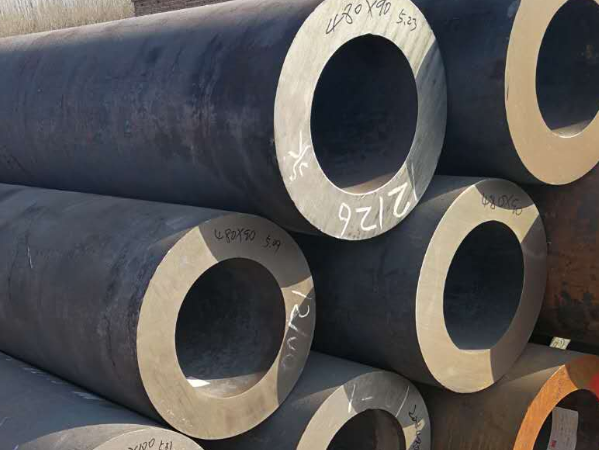Thick-walled seamless steel pipes are widely used in different fields of industrial production and engineering construction, such as important parts of various machinery and equipment, transportation of various fluid substances, oil exploration, etc. There are many types of thick-walled seamless steel pipes, the steel materials and specifications and models used are also different, and the types obtained according to different classification methods are also different.
Before using thick-walled seamless steel pipes, it is necessary to have a full understanding of various types of thick-walled seamless steel pipes, so that they can be used with ease.

The production process of thick-walled seamless steel pipe mainly includes four types, which are cold drawing, cold rolling, hot rolling, and hot expansion. Different production processes will produce different types of thick-walled seamless steel pipes, and their uses also exist. Big difference.
Generally speaking, ordinary thick-walled seamless steel pipes are made of 10#, 20#, 35#, and 45# steel, which are the most widely used type of thick-walled seamless steel pipes.
The country has corresponding industry standards for thick-walled seamless steel pipes for different purposes. For example, the standard for structural seamless steel pipes is GB/T8162-2008, and many seamless steel pipes for specific purposes have specific standards.
What is the production process of thick-walled seamless steel pipe?
The production process of general seamless steel pipe can be divided into cold drawing and hot rolling. The production process of cold rolling seamless steel pipe is generally more complicated than hot rolling. Sizing test, if the surface does not respond to cracks, the round pipe will be cut by a cutting machine, and cut into a billet with a length of about one meter. Then enter the annealing process. Annealing should be pickled with acidic liquid. When pickling, pay attention to whether there is a large amount of foaming on the surface. If there is a large amount of foaming, it means that the quality of the steel pipe cannot meet the corresponding standards. In appearance, the cold-rolled seamless steel pipe is shorter than the hot-rolled seamless steel pipe. The wall thickness of the cold-rolled seamless steel pipe is generally smaller than that of the hot-rolled seamless steel pipe, but the surface looks brighter than the thick-walled seamless steel pipe. Much rougher, and the caliber does not have too many burrs.
The delivery state of
hot-rolled seamless steel pipes is generally delivered after heat treatment in the hot-rolled state. After passing the quality inspection, the hot-rolled seamless steel pipe must be strictly hand-selected by the staff. After the quality inspection, the surface must be oiled, followed by multiple cold-drawing experiments, and the perforation experiment must be carried out after the hot-rolling treatment. , If the perforation diameter is too large, it will be straightened and corrected. After straightening, it is sent to the flaw detector by the transmission device for flaw detection test, and finally it is labeled, arranged in specifications and placed in the warehouse.


